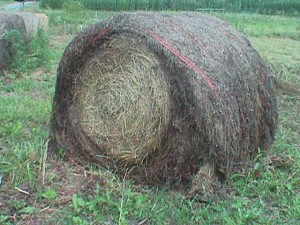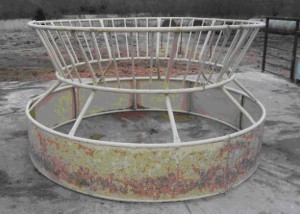– Francis L. Fluharty, Ph.D. Professor and Head, Department of Animal and Dairy Science, University of Georgia

Poor quality long stem forages, reduced forage supplies, and increased feed and supplementation costs all demand that we look at nutrition management even more closely this year!
The spring and summer of 2019 have set records for rainfall throughout much of the United States, having negative impacts on corn planting and hay production. In addition, areas of the southeast have been exceptionally dry, and hay production has been limited.
Feed costs are high, and with the poor planting season, this coming winter’s grain and grain byproducts could be much higher. Current corn prices are maintaining around the $4.40 level in the eastern corn belt, with transportation costs increasing this to around $5.40 in areas of the southeast. This works out to $.079 to $.096 per pound, depending on location. Dried distillers grains are currently in the price range of $130 to $170 per ton, FOB, or $.065 to $.085 per pound, and the prices of corn gluten feed is keeping pace on an energy and protein basis, at approximately $110 to $140 per ton, or $.055 to $.07 per pound. These prices are based on last year’s corn crop. With reduced corn acres planted this year, next winter’s prices are likely to be much higher, as reduced supply will likely increase costs, so beef cattle producers need to be planning on next winter’s feeding program now.
Compounding the problem this year is that poor hay and haylage making conditions mean that the first cutting of hay was delayed in many areas. The hay made from more mature forage will have a higher lignin content, making it less digestible than if the forage were harvested earlier, and there will be a lower protein content with more of the protein unavailable. [1]

Proper storage preserves quality and reduces waste.
For cow-calf producers, the poor quality forages, reduced forage supplies, and increased feed and supplementation costs will demand that we look at nutrition and management even more closely this year. If cows and heifers are in spring calving herds, maintaining body condition during pregnancy is likely to be more difficult, and probably more expensive than in the recent past. Over the past 15 years, research has clearly shown that cows that are deficient in protein, or energy, during gestation have calves that are less vigorous due to lower quality colostrum, have reduced marbling and growth potential due to retardation of fat cell and muscle development in the fetus, and that heifers born have delayed estrus meaning that they breed later than if their dams had been given sufficient energy and protein during gestation. Thus, the long-term implications of poor cow herd nutrition in mid to late gestation have negative impacts for much longer than just that winter.[2]
If producers have not done forage tests in the past, this is the year to start![3] Work with your Extension or feed company personnel to learn how to take a proper sample for forage testing, and know the energy, available protein, and mineral content of your forages so that you can develop a feeding plan.[4] Then, plan on getting the most out of your stored forages. There are many university web resources, including YouTube videos, that describe how to store round bales with reduced waste.[5] Likewise, there are numerous university web resources that discuss different hay feeder options.[6] Finally, using technologies such as chop-cut balers or tub grinders to reduce the particle size of the stored forage will increase digestibility and allow cattle to get the most out of the forage.[7]

Modified cone feeders with a sheeted bottom can reduce hay waste to only 5%
The goal of a cow-calf operator should be optimizing forage utilization so that supplementation is strategic. Knowing the forage quality, reducing storage and feeding losses, using processing technologies and supplements that are proven to increase the digestibility of forages will all help to reduce feed costs, maintain cow body condition, and help ensure that next year’s calf crop is not compromised due to poor cow nutrition and body condition.
[1] Hay Quality 2019; It’s Déjà vu All Over Again!
[2] Prepare for Late Gestation Nutrition
[4] Storing, Testing and Feeding Baled Forages
[5] Proper Hay Storage Reduces Losses!
[6] Hay Feeding Cost CAN Be Substantially Reduced
[7] Increasing the Digestibility of Forages = Economic Benefits!